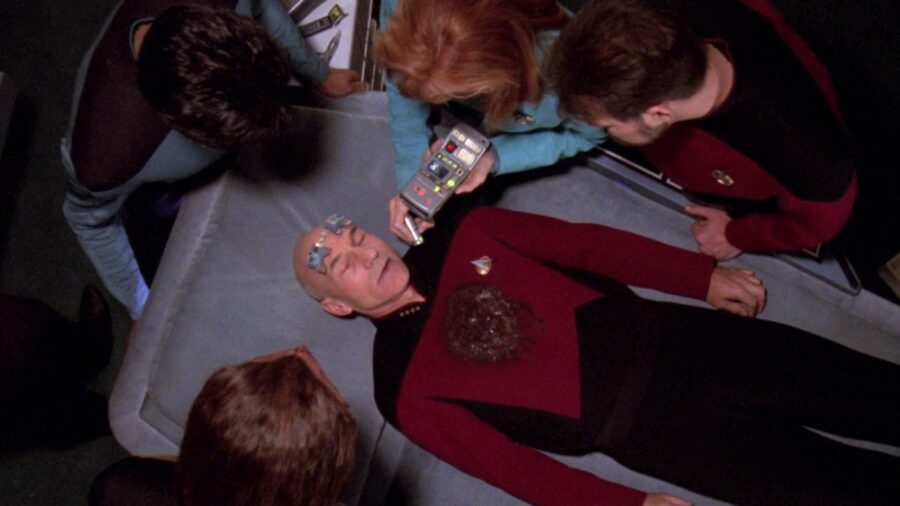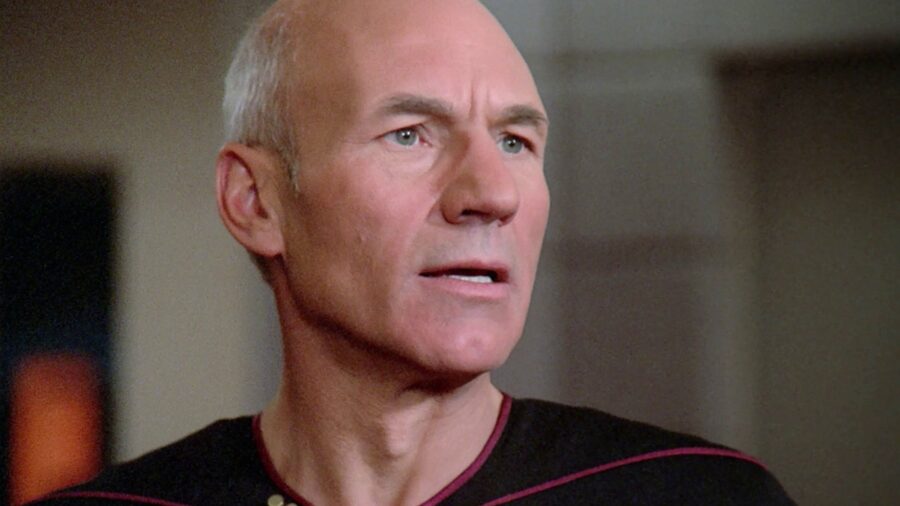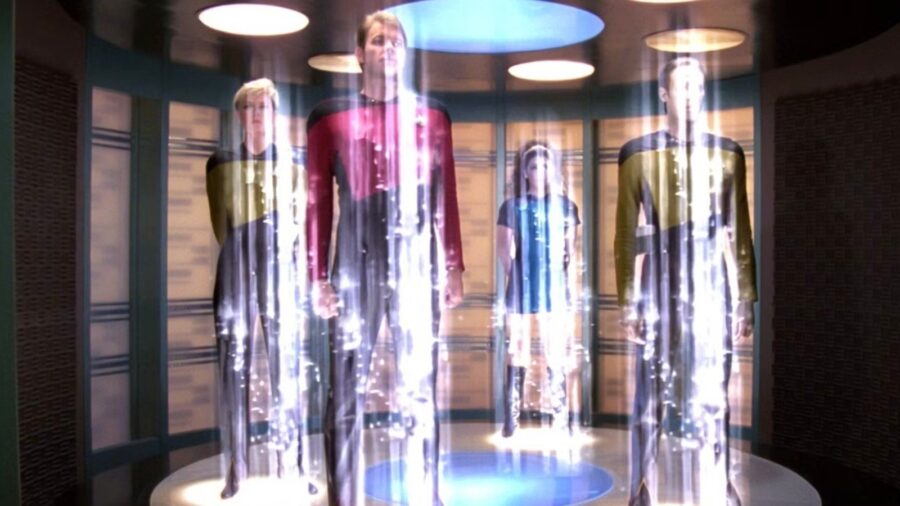Iconic Star Trek: TNG Episode Creates Plot Hole Hiding In Plain Sight For Decades

For the most part, the Star Trek: The Next Generation episode “Rascals” is beloved by fans because it pulled off the impossible, making us care deeply about a kid-centric story. Of course, it wasn’t just any kids—instead, it was Picard, Guinan, Ro Laren, and Keiko O’Brien who had been turned into pint-sized versions of themselves due to a freak transporter accident. The whole tale is entertaining enough that most people never noticed the glaring plot hole: that Picard had an adult-sized heart transplant that would likely not have fit his new kid body.
Where No Kid Has Gone Before

Toward the beginning of “Rascals,” a transporter accident changes the aforementioned crew members into 12-year-old versions of themselves. They retain their adult minds and memories, but having these tiny bodies proves to be a major inconvenience when Ferengi take over the Enterprise.
Picard naturally takes charge of his de-aged crew and the actual children onboard the ship to help save the day, but this episode weirdly never addresses what’s going on with his artificial heart.
Tapestry

In the later episode “Tapestry” (it came out eight episodes after “Rascals”), we find out that Picard was stabbed in a barfight with a Nausicaan when he was a younger man, and the wound was so grievous that the future captain needed to get an artificial heart.
This makes for interesting character development for, and it arguably foreshadows his mind later being transferred into a completely artificial body. However, that episode retroactively creates a plot hole in the “Rascals,” one that was never addressed onscreen: if the transporter just shrunk the Picard down to his younger self, what happened with his artificial heart?
Fan Theories

Like, if the ship’s computer was capable of just generating a new heart on the fly, then Picard never would have needed the artificial replacement in the first place. We never find out exactly what happened with the replacement in “Rascals,” but there are several interesting fan theories about what the transporter might have done with Picard’s artificial heart.
For example, a popular theory is that his futuristic replacement might be a “one size fits all” model that simply had no problem working in his smaller body just as it did in his artificial body.
Other Ideas

Other “Rascals” viewers have put forward other theories, including the idea that the younger Picard has room in his chest cavity for an artificial heart. Between that and the idea that the tech is so much more advanced than our own, the idea is that it might have still functioned as intended in the child’s body.
However, all of this just adds up to fun nerd speculation because the real reason for this plot hole is that “Rascals” was written well before “Tapestry” would make Picard’s artificial heart part of his lore.
Is The Transporter Just That Good?

Another reason not to fret about this issue too much is that every possible answer involves just assuming that Starfleet transporters have godlike powers to do things like instantly reconnect artificial organs with smaller real organs or shrink down the fist-sized heart on the fly.
Maybe we should give the transporter such credit—after all, the system would functionally allow for Starfleet officers to stay immortal if used in a slightly different way. So if the system that allows humanity to perpetually cheat death as needed is also able to magically handle Picard’s artificial heart, we’ll just have to accept that.
If nothing else, it’s a safe bet you’ll never view “Rascals” again without asking yourself these questions. It’s tough for Next Generation fans to see young Picard and not think that the unknown status of his artificial heart makes for one big plot hole. But the episode itself is so charming that we’ll do our best young Picard impression and dub this glaring issue “our number one plot hole.”












